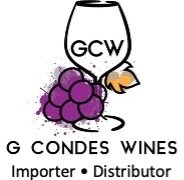Is it time to write off Bordeaux?
There are plenty of reasons to be anti-Bordeaux lately. Its elitist image can be annoying. Another turn-off is corporate ownership: with Châteaux increasingly gobbled up by insurance and luxury goods companies, Bordeaux is headed in the opposite direction of the independent grower movement that many buyers seek. Then there are the dominant Bordeaux brands who have raised their prices consistently just because they can.
So it's no surprise that, despite positive reviews and even some price drops, the current ‘23 en-premier releases are being received with indifference. Some buyers are considering avoiding the category completely.
But as tempting as it might be to write it off, Bordeaux is still essential. Just like Burgundy with Pinot Noir, Bordeaux embodies the pinnacle of two of the world’s most widely admired varieties, Cabernet Sauvignon and Merlot. And even with substantial price inflation, Bordeaux offers better value than California. In fact, many wine drinkers would be surprised at how well Bordeaux stacks up--if only "the image thing" wasn't an issue.
Are there Bordeaux options that fit today's ethos? There are, and Château Trapaud is one of them. This woman-led, organically farmed, St-Emilion grower has gone against the establishment far before it was trendy and become one of the most exciting producers of Bordeaux.
Château Trapaud's break from tradition wasn't out of necessity. In fact, Béatrice Larribière, as the fourth generation of the estate, might have been expected to blaze a more conservative path. A lot was at stake given the estate's prime location on the famed côte de St.-Emilion between Pavie and Valadraud, with other famous neighbors including Angelus, Ausone, Beau-Séjour Bécot,Troplong Mondot and Clos Fourtet.
But Béatrice had ideas of her own. She had been to enology school in Bordeaux and done apprenticeships in Australia and California, and was convinced that organic farming was essential.
Thus, as soon as she became winemaker almost 30 years ago, she converted the estate to organic and biodynamic farming.
She then ages 25% of the wine cement to achieve a more terroir-driven style. The result is a wine for the table which can be enjoyed young or cellared for years. All of this for a price that you can’t touch from California for a comparable wine.
So when we got the chance to pick up some more of the 2015 library vintage—one of the best of the past 20 years—of course we did. The wine is stunning right now with dried plum, dry rose petal, balsam spices, cigar box, leather-bound books, dried figs, a hint of bitter chocolate, secondary and tertiary characters, firm, polished tannins, and a lengthy finish. This is a classic vinous wine, the very definition of "world class."
If you want an outstanding grower-made, organically farmed wine that gives Napa a run for its money, then look no further. You can still find it in, of all places, Bordeaux.




